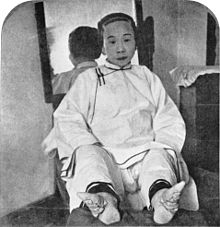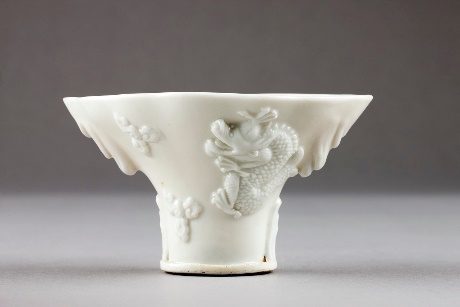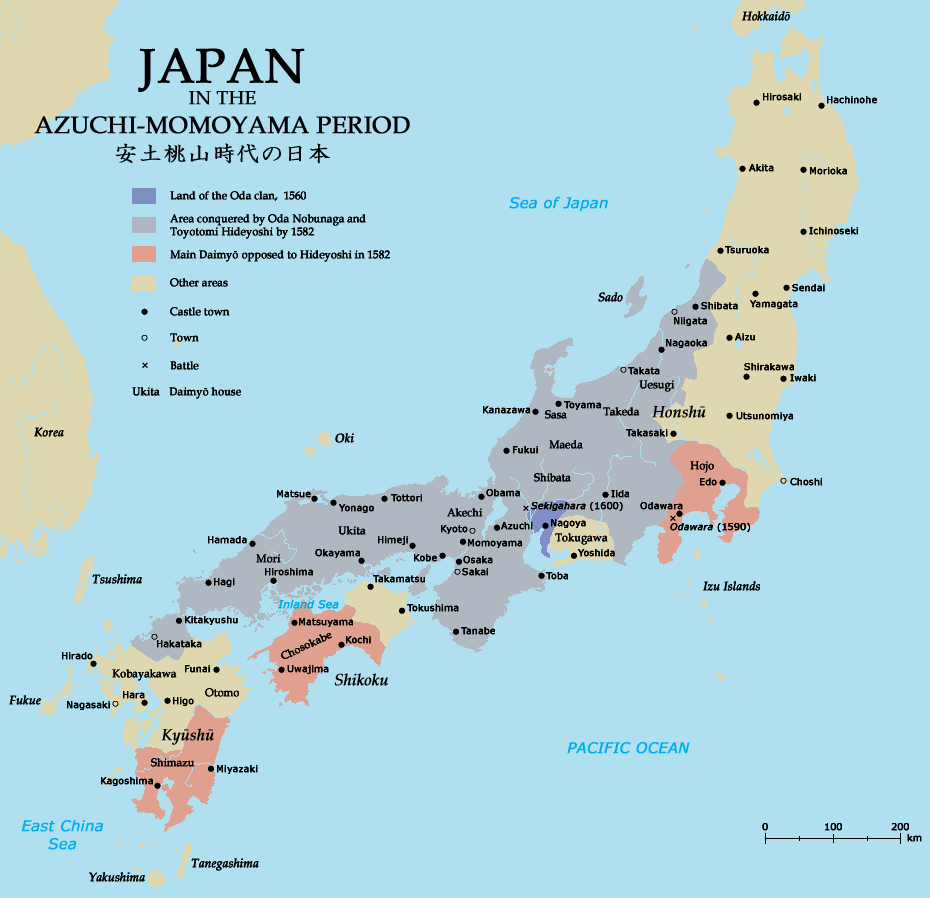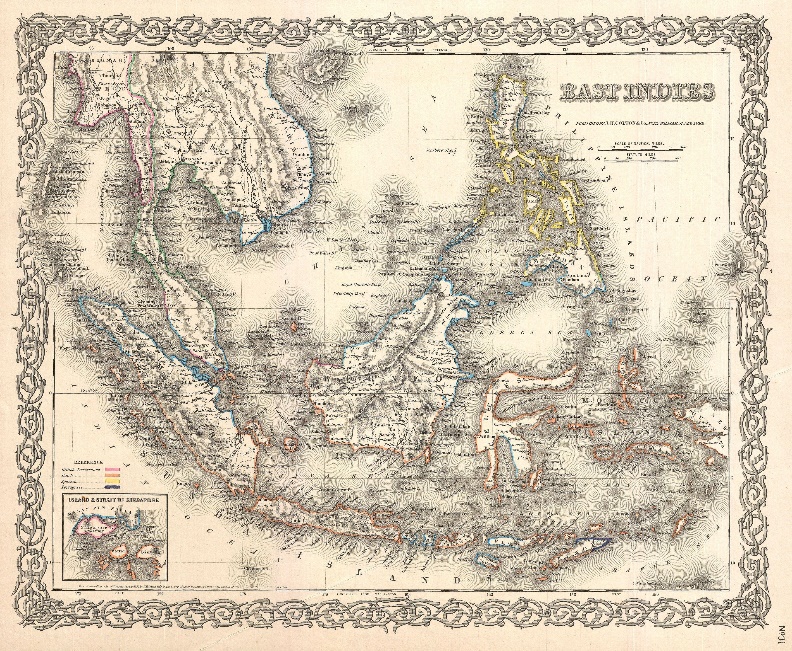6 EAST AND SOUTHEAST ASIA
In the early 16th century, Asia remained relatively isolated from the rest of the world, with limited contact beyond the exchange of ideas, inventions, goods, crops, and animals along the Silk Road. The Asian world, characterized by emerging state forms and cultures, developed largely independently, shaped by Chinese Confucian patterns and worldview.
However, Confucianism also perpetuated the subordinate status of women, a common trait among emerging complex civilizations. In China, upper-class men were allowed multiple wives and concubines, while women were expected to remain in the home, dedicating their lives to serving their husbands and sons. The practice of foot-binding, which emerged among high elites during the Song dynasty (960-1279 CE) and continued into the Ming dynasty, exemplified the subordination of women in Chinese society.

A photograph of a Chinese woman with bound feet (Source: Wikimedia)
|
Click and Explore |
|
Learn more about the practice of footbinding by reading this article in the Smithsonian magazine. |
As Japan, Korea, Vietnam, and other Asian states sought to consolidate power, they often adopted key elements of Confucian rule, with the notable exception that high office was typically reserved for aristocrats, lacking the social mobility aspect of Chinese Confucianism. This led to the development of the Tribute System, where “junior” East Asian Confucian states sent diplomatic missions to pay homage to China, the “senior” center of Confucianism.
Over time, this system benefited participating states by providing increased trade opportunities and the promise of Chinese military support in times of need. In return, China became the political hub of a stable network of friendly states, which were somewhat beholden to Chinese influence. This arrangement allowed China to maintain its position as the dominant power in the region, while also fostering a sense of stability and cooperation among neighboring states.
CHINA (Ming Dynasty)
In the 16th century, China’s Ming Dynasty remained in power, with the emperor and his Confucian bureaucracy holding absolute authority. The government’s main objective was to restore and rebuild the country after the devastating Mongol invasions of the past. At the same time, China was experiencing a profound transformation in its economy and urban centers, sparked by the introduction of silver in the late 1500s. As silver became a widely accepted medium of exchange, China’s economy flourished, leading to unprecedented growth and prosperity.
|
Watch and Learn |
|
Watch Crash Course in World History #7 to be introduced to the major events, persons, and themes of Chinese history. |
The Ming government attempted to shield China from Western cultural influences while still engaging in trade. European merchants, who had few manufactured goods of interest to Chinese traders, paid in silver for the highly sought-after Chinese products. This influx of silver depleted European stocks, inflated China’s currency, and enabled the emergence of a prosperous merchant class. Prominent merchant clans, such as the Huai and Jin, accumulated vast wealth, which they used to educate their sons and secure positions in the scholar elite through the Confucian exam system.
China’s economy shifted towards a silver-based currency, with silver becoming the standard medium of exchange in both formal and informal economic transactions. The country became integrated into the early modern world economy on favorable terms, relying heavily on silver imported by the Portuguese and Spanish. The Chinese opened the ports of Canton (Guangzhou) and Macau to trade tea, silk, and porcelain, stimulating commerce with silver from the Americas. The Ming government’s investments in canals, roads, and bridges further facilitated trade and commerce. In addition to silver, the Spanish introduced new crops like sweet potatoes, maize, and peanuts, which could be cultivated in areas unsuitable for traditional Chinese staples. These high-nutrition foods contributed to a significant population increase in China. The Ming also imported European firearms to modernize their military.
During the Ming era, literature, poetry, and painting thrived, particularly in the economically prosperous lower Yangtze valley. The Yuan brothers founded the Gong’an School, known for its intense sensual lyricism, which also characterized Ming vernacular novels like the Jin Ping Mei. This romantic literature resonated with the nobility, merchant class, and scholar-officials, who sought meaningful relationships with courtesans as soulmates to reenact the heroic love stories that arranged marriages often could not provide or accommodate.
Ming China in the 16th century was also renowned for ceramics and fine porcelains. Imperial kilns at Jingdezhen in Jiangxi province and Dehua in Fujian province served as the major production centers. The Dehua porcelain factories catered to European tastes by creating Chinese export porcelain. Carved designs in lacquerware and designs glazed onto porcelain wares displayed intricate scenes similar in complexity to those in painting. These items could be found in the homes of the wealthy, alongside embroidered silks and wares in jade, ivory, and cloisonné. The houses of the rich were also furnished with rosewood furniture and feathery latticework.
.

A porcelain vase from the 16th century (Ming China) Source: Wikimedia
In 16th century China, the lives of ordinary citizens were characterized by a rigid social hierarchy and economic hardship. The majority of the population resided in rural villages, engaging in agriculture or artisanal work, and were bound to the land by the imperial system of taxation and labor. Illiteracy was widespread, and access to education, healthcare, and social mobility was limited. The strict Confucian social order emphasized obedience to authority and adherence to traditional roles, constraining individual freedom and creativity. Nevertheless, ordinary Chinese continued to observe their traditional customs and beliefs, finding solace in Buddhism, Daoism, and local deities. However, their lives were increasingly influenced by the growing commercialization of the economy, which introduced new opportunities for trade and cultural exchange but also exacerbated social inequalities and environmental degradation. The imperial government’s emphasis on agriculture and self-sufficiency resulted in many people living in isolated communities, with limited access to the wider world beyond their village.
|
|
IN THEIR OWN WORDS |
| In the 16th century, Li Shizhen wrote his Shen Nong Ben Cao Jing (Compendium of Materia Medica), which contained information about the medicinal use of over 1,200 herbs. There are many medical adaptations from Chinese medicine in the western world, including iron for anemia, castor oil, lanolin, camphor, chaulmoogra oil, ephedra vulgaris and a method of inoculation with smallpox matter for immunization against that disease.
Excerpts from Li Shizhen Compendium: The Compendium is a medical text with 1,892 entries, with details about more than 1,800 drugs, including 1,100 illustrations and 11,000 prescriptions. The first draft was completed in 1578. The following is an example of the information contained with this book: ShiDan (Cuprus Sulphate) is sour and a little cold. It mainly brightens the eyes and treats eye pain, incised wounds, and all kinds of epilepsy and tetany. It treats genital erosion and pain in females, stone strangury, cold and heat flooding and precipitation of blood, and various kinds of evil and toxic qi. It makes pregnancy possible. Its other name is Bi Shi (Green Stone). It is produced in mountains and valleys. Shi Zhong (Stalactitum) is sweet and warm. It mainly treats cough and counterflow qi ascent. It brightens the eyes, boosts the essence, quiets the five viscera, frees the hundreds of joints, disinhibits the nine orifices, and promotes lactation. It is produced in mountains and valleys. Read an English translation of Shizhen’s book (from which these examples were taken). |
|
JAPAN
By 1500, Confucianism and imperial rule had shaped Japan’s political culture for nearly a thousand years. Initially, the ambitious Yamato clan bolstered its power by emulating China’s centralized imperial Confucian governance, but without offering social mobility to non-aristocrats. By the 12th century, aristocratic elites were ceding actual power to regional warrior clans, who established the distinctive Shogunal system. This system entailed the emperor “delegating” real authority to a succession of three warrior “Shoguns,” who wielded actual control.

A 16th century map of Japan (Source: Wikimedia)
In the 16th century, the Ashikaga Shogunate (1336-1573) gradually lost power, paving the way for a new form of Shogunal rule that blended Confucianism with traditional Japanese warrior ideology. This period, known as the “Age of Warring States” (1467-1615), was marked by civil war, social upheaval, and political intrigue. Although the emperor held ceremonial power, real authority rested with powerful warlords called Daimyos who fought one another for political power and control.
In the late 16th century, Japan reunified under three powerful warlords: Oda Nobunaga, Toyotomi Hideyoshi, and Tokugawa Ieyasu. Oda Nobunaga, known for his brutal tactics and efficient administration, established a pattern of feudal rule, disarming the peasantry and solidifying the divide between the samurai class and the rest of the population. He also implemented policies to centralize power, including the creation of a network of spies and informants, and the forced relocation of artisans and merchants to strategic locations. Nobunaga’s military campaigns, which included the use of firearms and innovative tactics, allowed him to unify much of Japan under his rule. However, his brutal suppression of Buddhist temples and his persecution of Christians created resentment among some segments of the population. In fact, European missionaries, including Jesuits such as Francis Xavier and Gaspar Vilela, had arrived in Japan in the 1540s and had made significant inroads in converting the Japanese population to Catholicism. By 1600, over 100,000 Japanese had converted, but Nobunaga’s persecution of Christians would ultimately lead to a backlash against European influence. Despite his achievements, Nobunaga’s life was cut short when he was betrayed and killed by one of his own generals in 1582.
Toyotomi Hideyoshi, who succeeded Nobunaga, continued his predecessor’s policies, further centralizing power and expanding Japan’s borders through military campaigns in Korea. He also implemented a system of social hierarchy, known as the “Shinōkōshō,” which solidified the power of the samurai class and restricted social mobility. Hideyoshi’s rule was marked by a series of edicts, including the “Sword Hunt” of 1588, which aimed to disarm the peasantry and prevent rebellions. He also launched two invasions of Korea, known as the Imjin Wars, which were unsuccessful but had a profound impact on Japanese society.
Tokugawa Ieyasu, who succeeded Hideyoshi, established the Tokugawa Shogunate, which ruled Japan for the next 250 years. His victory at the Battle of Sekigahara in 1600 marked the beginning of a new era in Japanese history, one characterized by relative peace and stability, but also strict social control and isolation from the outside world. In 1598 he died, leaving his five-year-old son Hideyori to inherit his position. However, the five-member council that was to rule until Hideyori came of age was soon divided, and the two sides made war upon each other. In 1600, Tokugawa Ieyasu, a vassal of Hideyoshi, defeated his opponents at the Battle of Sekigahara, and he became shogun in 1603.
For ordinary Japanese, life in the 16th century was marked by hardship and uncertainty. Most people lived in rural villages, working as farmers or artisans, and struggled to make ends meet. The constant warfare and power struggles between daimyos led to frequent displacement, famine, and disease. Villages were often raided, and crops were destroyed, leaving many without food or shelter. Additionally, the strict social hierarchy and feudal system meant that ordinary people had little social mobility or rights. They were forced to provide labor and taxes to their daimyo, and any dissent was quickly suppressed. Despite these challenges, ordinary Japanese continued to practice their traditional customs and beliefs, finding solace in Buddhism, Shintoism, and community rituals. However, their lives were increasingly influenced by the centralizing policies of the warlords, which aimed to control every aspect of their lives, from their occupation to their religious practices.
INDONESIA AND ADJACENT ISLANDS
Indonesia, a vast archipelago situated south of continental Southeast Asia and east of Australia’s northern coast, boasts a rich cultural heritage shaped by diverse influences. Initially, Indian cultures, specifically Hinduism and Buddhism, exerted a profound impact, followed by the increasing influence of Islam from the 13th century onwards. Throughout the first millennium, numerous states and empires flourished, with trade playing a vital role due to the region’s strategic location along major sea lanes and proximity to prosperous civilizations.
By the late 16th century, Islam had become the dominant religion in the Indian Ocean, with the notable exception of Bali, where Hindu influence remained substantial. On Java, the former epicenter of the Hindu-Buddhist Majapahit Empire, the adoption of Islam was marked by intermittent conflict between coastal Muslim communities and interior Hindus and animists. However, conversion was largely peaceful, driven by mercantile interests seeking to connect with the established Islamic trade network spanning India, Persia, Arabia, and Africa. This affiliation offered protection under Islamic law and facilitated commerce.
Sufi mystics like Hamzah Fansuri (1520s-1590s) played a crucial role in synthesizing Islamic teachings with indigenous traditions, thereby facilitating the coexistence of Islam with local beliefs. Hamzah’s writings on Islamic mysticism, which incorporated elements of local customs, exemplified this syncretic approach. By emphasizing spiritual purification and inner devotion, Sufism resonated with existing animist and Hindu-Buddhist practices, enabling a gradual and inclusive process of Islamization. Consequently, Indonesian Islam evolved distinct characteristics, blending Islamic doctrine with local rituals and traditions. This unique cultural landscape was shaped by the dynamic interplay between Islamic and indigenous influences.

A 19th century map of Indonesia (Source: Wikimedia)
SOUTHEAST ASIA
In the early 16th century, Southeast Asia was a thriving and diverse region, with prosperous kingdoms and bustling markets. Merchants from across the Indian Ocean world, including Arabs, Indians, and Chinese, flocked to its ports to trade in unique spices like nutmeg and cloves, as well as precious woods, resins, and oils. The region’s strategic location and rich resources made it a hub of global commerce, with Southeast Asian rulers maintaining strong trade relationships with their Asian counterparts. However, the arrival of European powers, particularly the Portuguese, marked a significant shift in the regional balance of power. By 1511, the Portuguese had captured Melaka, a crucial trading hub, and established a foothold in the region.
Sultan Alauddin Riayat Shah of Aceh (1537-1571), for example, navigated this complex landscape by forming opportunistic alliances with European powers while maintaining strong ties with his Asian neighbors. He enlisted European mercenaries and advisors to bolster his military, while also trading with Arab merchants to secure valuable goods. As European powers like the Dutch and Spanish sought to expand their influence in the region, Sultan Alauddin Riayat Shah skillfully managed competing interests to ensure the prosperity and independence of his kingdom. Despite these challenges, Southeast Asia remained a vibrant and dynamic region, with its unique cultural heritage and traditions shaping the course of global history
